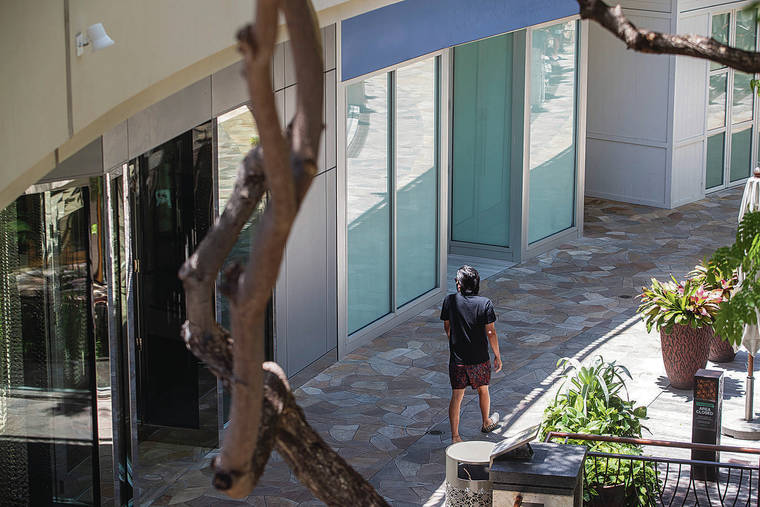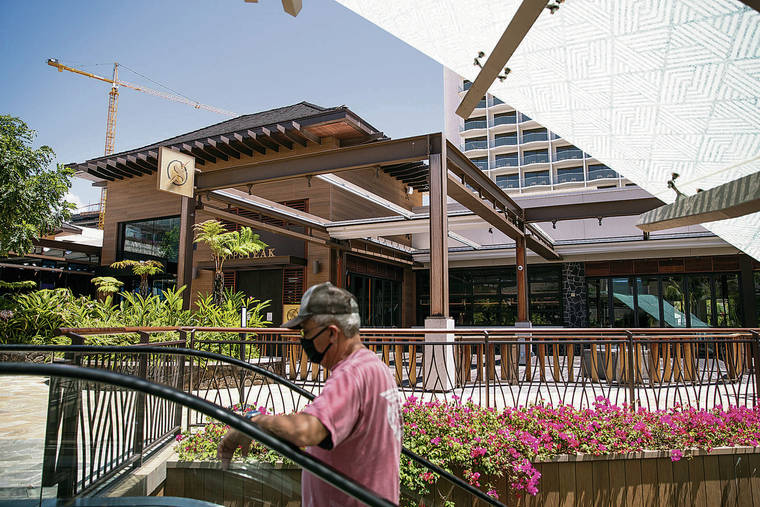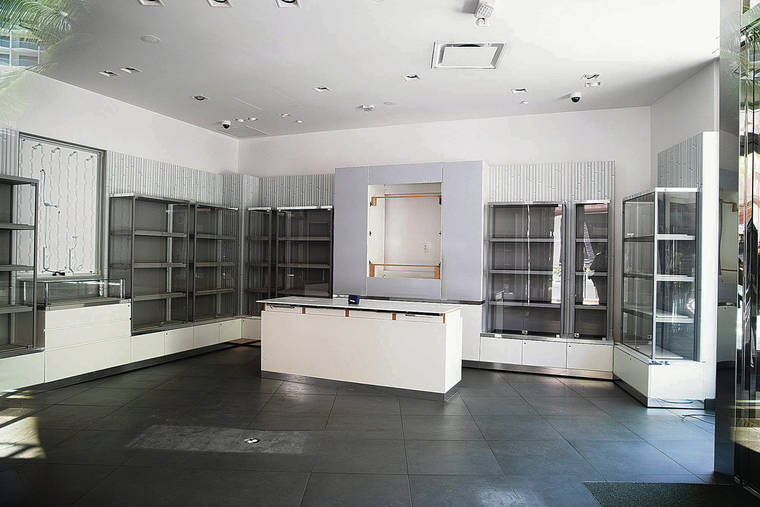More Oahu retailers close permanently, creating a surge in vacant space

CINDY ELLEN RUSSELL / CRUSSELL@STARADVERTISER.COM
A shopper Thursday walked past shuttered retail storefronts at the International Market Place in Waikiki.

CINDY ELLEN RUSSELL / CRUSSELL@STARADVERTISER.COM
A man rode an escalator up to the Grand Lanai level where a space once occupied by restaurant StripSteak Waikiki now sits empty.

CINDY ELLEN RUSSELL / CRUSSELL@STARADVERTISER.COM
A retail space stood empty Thursday at the International Market Place in Waikiki.



Collateral damage from COVID-19 in Oahu’s retail industry has multiplied greatly in recent months and likely will get worse before the year is over, according to a new report.
An assessment by commercial real estate firm Colliers International released for publication today said a flood of empty retail space has hit many shopping centers — producing about 329,000 square feet of additional vacant space on the island during the first three months of this year.
The addition is a stunning amount of space roughly equivalent to Royal Hawaiian Center in Waikiki being vacated.
Mike Hamasu, consulting and research director for Colliers in Hawaii, said it appeared that many retail and restaurant operators decided to cease business after hanging on through what is typically the higher- sales holiday season and then seeing little reason to carry on further amid the relentless coronavirus pandemic.
“Attempting to survive a full year without regular sales proved to be too difficult for some, as many retailers decided to throw in the towel at the start of the new year,” Hamasu wrote in the report.
The surge in vacant space from January to March was triple the 107,586 square feet of additional vacant space produced in all of 2020.
Don't miss out on what's happening!
Stay in touch with breaking news, as it happens, conveniently in your email inbox. It's FREE!
Colliers said the amount of vacant space added in the first quarter was a record for any quarter in more than 20 years, and topped the total in 2003 when JC Penney closed its multilevel department stores at Oahu’s two biggest malls, Ala Moana Center and Pearlridge Center, in a move that left 312,000 square feet of space empty.
However, unlike 2003, when there was an expectation for most of the new empty space to be filled rather quickly, the current glut of retail vacancy is expected to peak later this year and take several years to recover.
Colliers projects that the retail vacancy wave on Oahu will peak in the third quarter and end the year at about 362,000 square feet of additional empty space added to the market.
Overall, Oahu has about 17 million square feet of retail space. At the end of last year, about 1.1 million square feet, or 6.4%, was vacant.
The vacancy rate at the end of March had grown to 8.3%. Colliers expects the rate at the end of the year to be 9.2%, or nearly 1.6 million square feet of vacant space.
Another commercial real estate firm, CBRE, said in its own report released Thursday that retail vacancies could rise over the next few quarters if tenants that are temporarily closed convert to permanent closures. However, CBRE also said there are signs that temporarily closed tenants are reopening with some success and that this could stave off further substantial increases in the vacancy rate.
Oahu relaxed restrictions on many retail businesses Feb. 22 with a move to the county’s Tier 3 reopening standards, which allow more customers to be in establishments including stores, restaurants, gyms, movie theaters and car dealerships.
On Wednesday, Honolulu Mayor Rick Blangiardi and Gov. David Ige agreed to maintain the Tier 3 standard for four weeks despite the number of COVID-19 cases getting high enough to revert to the more restrictive Tier 2.
Colliers noted in its report that retail sales statewide fell 14%, or by $3.3 billion, last year based on the most recently available state tax data.
CBRE said the statewide retail vacancy rate in the first quarter was at a 20-year high of 9%, up from 8% at the end of last year.
In the first quarter on Oahu, regional malls suffered the brunt of tenant losses, according to Colliers, which said about 275,000 square feet of additional vacant space hit such properties.
CBRE reported that Ala Moana, the state’s biggest mall, had 124,765 square feet of additional vacant space in the quarter, driven by the loss of smaller tenants rather than large anchors.
Restaurants were particularly hard-pressed to stay in business. Permanent closures noted in the Colliers report included Real Gastropub, Nobu Honolulu, Dillingham Saimin, Top of Waikiki, Formaggio Wine Bar and Viaggio. CBRE noted that Consolidated Theatres vacated its 38,000-square-foot 10-plex at Koolau Center in Windward Oahu.
Resort retailers also have been particularly challenged.
On the flip side, certain types of retail space tenants have benefited from higher sales during the pandemic, including grocery stores, home improvement stores and fast food restaurants.



